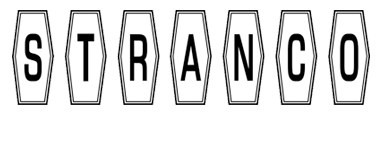After a series of reports, in September 2012, the Centers for Disease Control and Prevention, Food and Drug Administration and various other health and safety agencies began a thorough investigation into the widespread outbreak of fungal meningitis and other serious infections in 20 states across the country.
In total, 753 individuals contracted non-fatal, though still life-threatening infections ranging from meningitis to meningitis with a paraspinal infection. There were 64 reported deaths, where Michigan – with 264 cases and 19 deaths – and Tennessee – with 153 cases and 16 deaths – reported the highest numbers of cases and deaths, according to CDC figures.
Federal agencies traced this outbreak back to patients who received contaminated preservative-free MPA steroid injections supplied from the New England Compounding Center in Framingham, Massachusetts. The NECC is a compounding pharmacy, meaning that it is authorized to mix, combine and alter drug ingredients to create specific formulas for individual patient needs and prescriptions. Instead, the investigation uncovered that the NECC was knowingly distributing and producing mislabeled, unsanitary or contaminated prescriptions for broad use, not just to specific patients.

What has been done on a federal level following this tragedy?
As a direct result, President Barack Obama signed the Drug Quality and Security Act into law on November 27, 2013. This bill provides the FDA with extensive control over the monitoring and regulation of compound drugs within the country. As outlined in the act, all manufacturers, repackagers, distributors and some dispensers must work closely with the FDA over the decade following the bill's enactment.
Some of the essential requirements addressed and enforced over these 10 years include implementing product identification, tracing, verification, detection and response, notification and licensing for wholesalers and third-party logistics providers. Product identification and verification includes barcodes or other easily readable labels for all drugs and drug packaging cycling throughout the supply chain.
"High-quality thermal transfer barcode labels are the ideal choice for drug manufacturers."
According to the bill, manufacturers and suppliers must apply a unique product identifier to select prescription drug packages, which is "a standardized graphic that includes, in both human-readable form and on a machine-readable data carrier that conforms to the standards developed by a widely recognized international standards development organization, the standardized numerical identifier, lot number and expiration date of the product."
How does product identification prevent patient illness or death?
With accurate barcoding and labeling practices, drug manufacturers, suppliers and others in the industry can ensure that their products meet federal labeling standards and prevent future epidemics, like the meningitis outbreak, from developing. This tragedy is a direct example of how important it is for those in the health care sector to vigorously adhere to all mandated labeling standards. Through investing in durable, easily readable labels for all prescriptions and drug packaging, manufacturers can rest assured that their products will remain scrutiny free throughout their lifespan.
Physicians and other health care officials should also push for comprehensive product identifiers on all drugs and other medical equipment they use throughout their day. This way, they can easily diagnosis and treat their patients, without fear that their prescriptions or devices are mislabeled or contaminated.
High-quality thermal transfer barcode labels are the ideal choice for drug manufacturers looking to boost the efficiency of their operations, lower operating costs, reduce the risk of human error and comply with federal regulations. At Stranco, we supply an extensive selection of thermal transfer labels for a variety of health care labeling applications and customizable solutions for specific industry needs. Contact us today to learn more about how we can help your organization improve its labeling standards with thermal transfer barcode labels.

